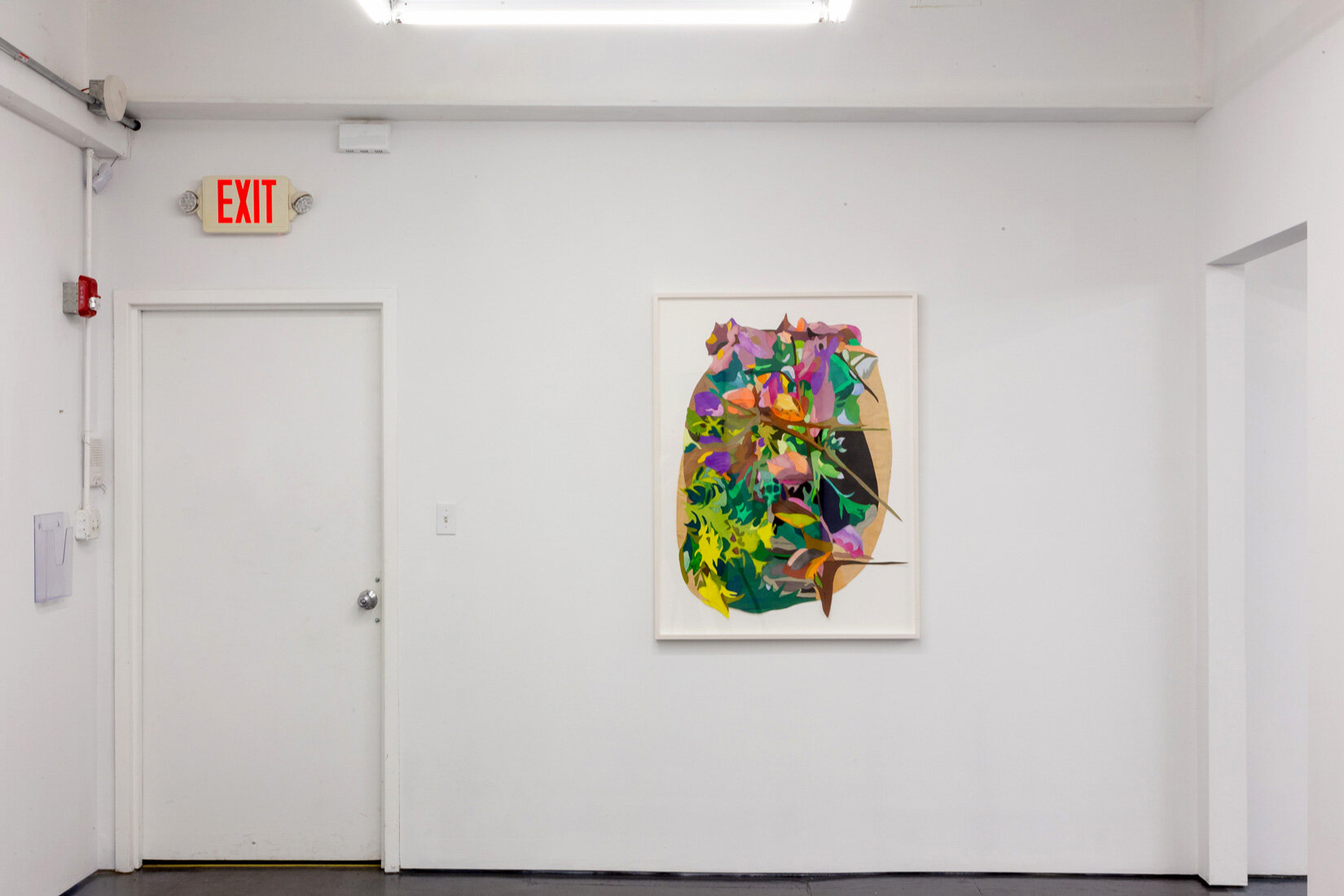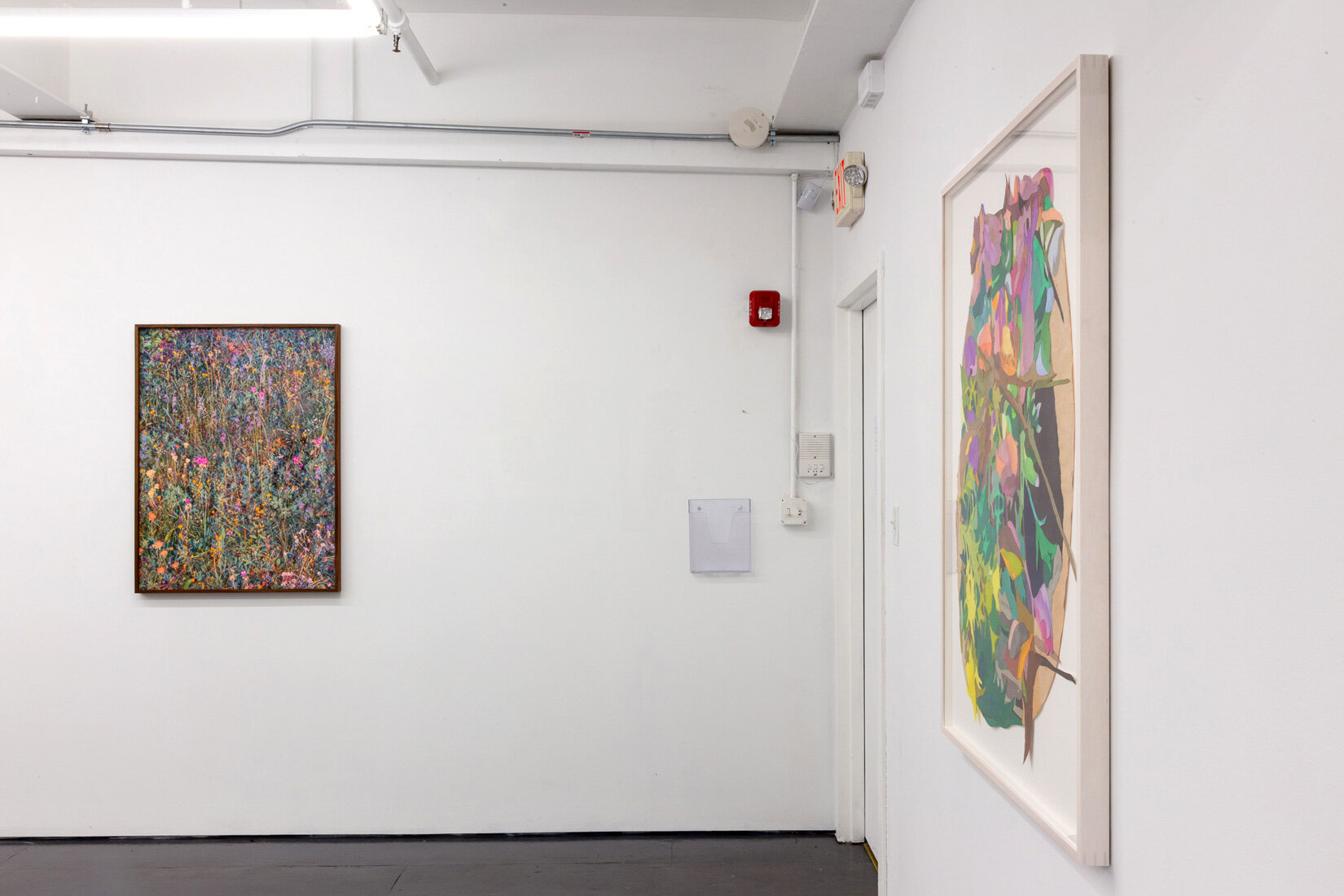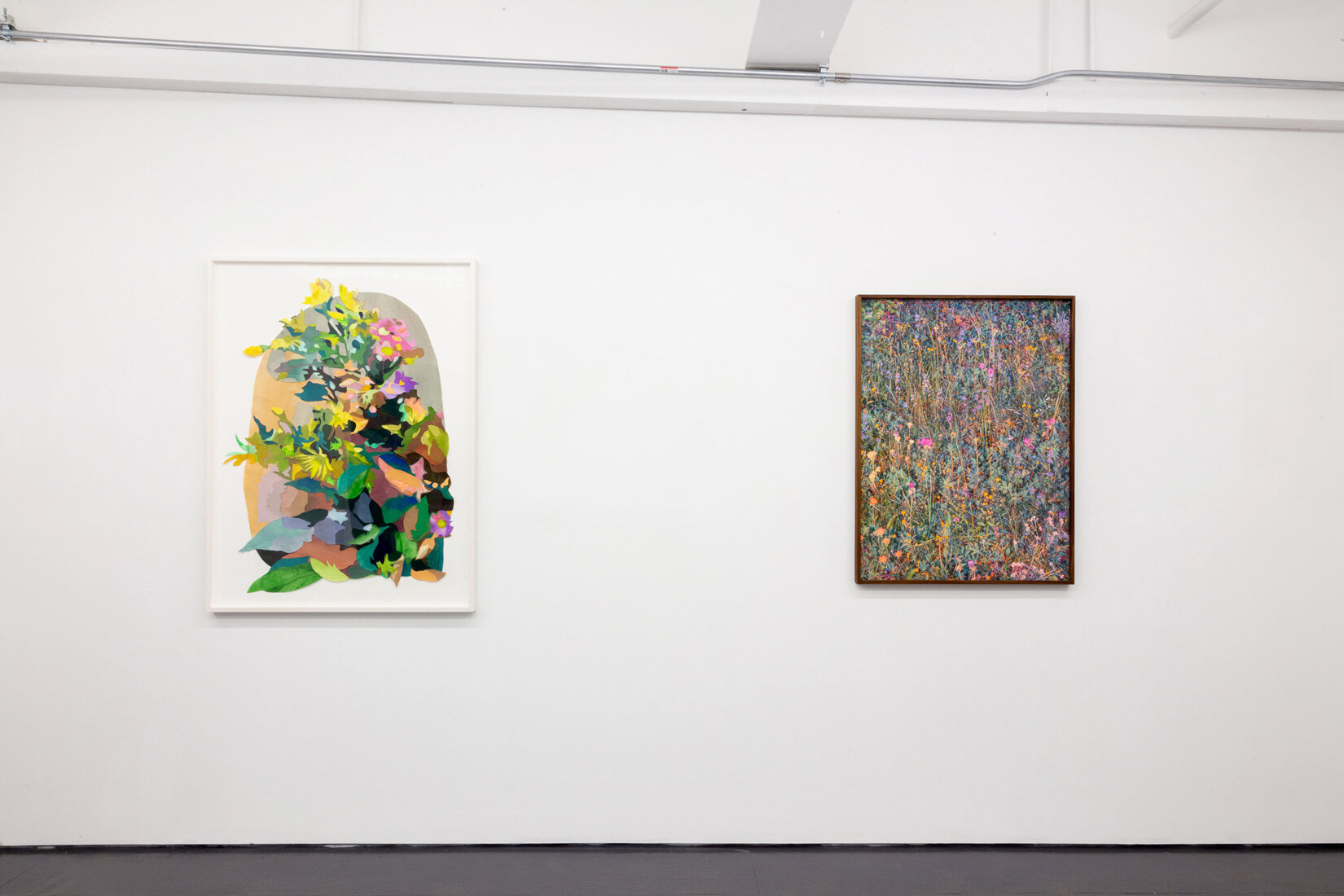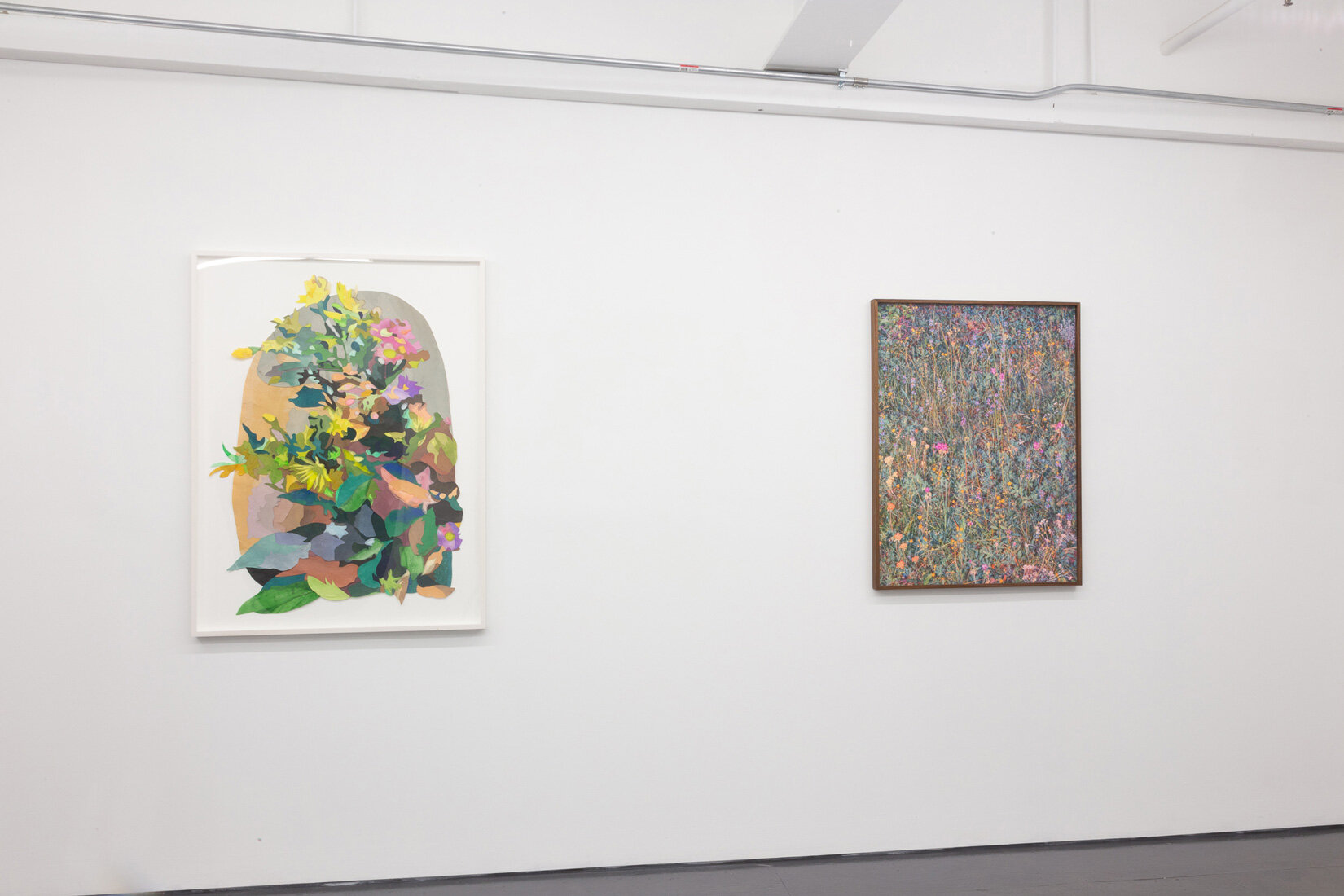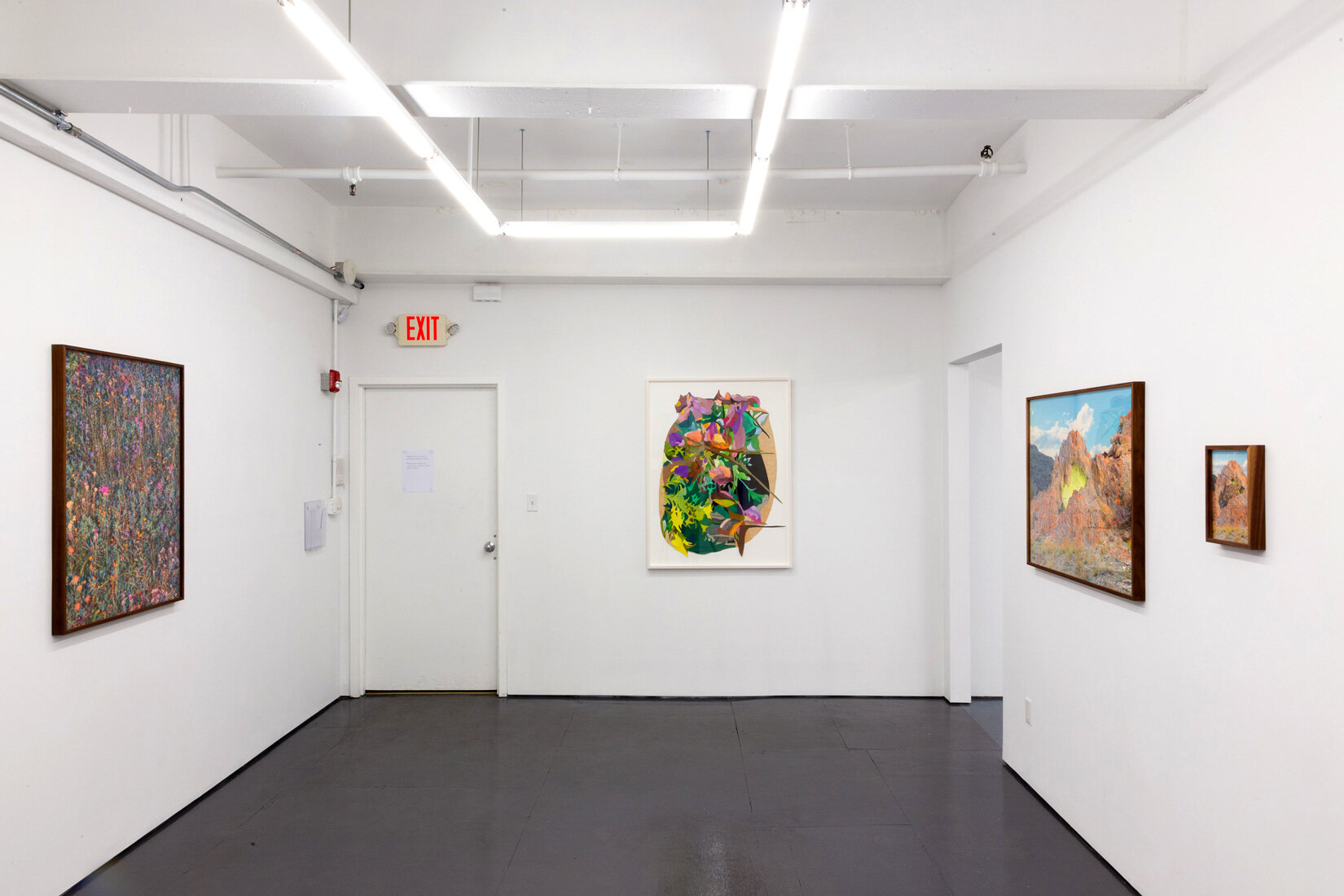Wildflowers & Fever Dreams
Work by Naomi Kawanishi Reis and Christopher Edward Rodriguez
APRIL 10 – MAY 9, 2021
“As a child when home sick from school, I would gaze out the window at a large tree, its branches forming a chaotic nest of lines. I was convinced if I concentrated hard enough, I would find order in the inherent formal logic in nature.
The memory returned this past year during the pandemic while staring idly at my multiplying houseplants. I kept thinking there must be an essential truth in domesticated nature, waiting to be uncovered if only I looked hard enough. My prolonged urban confinement has severed my relationship to nature, reducing it to a half-remembered fever dream in which my connection to the natural world hangs on my desperate efforts to keep my plants alive.” -Carl Gunhouse, Transmitter Co-Director
Wildflowers & Fever Dreams features works by Naomi Kawanishi Reis and Christopher Edward Rodriguez, which exist in the polarity between a deepening connection to the internal act of flower arrangements and a distorted memory of what outdoor natural expanses once were.
Reis’s recent work starts with photographs taken by her mother of her ikebana arrangements, which are displayed outside the family home in Kyoto. Reis downloads the images from the family group chat, the link that for decades has connected her diasporic family across oceans. These digital connections are the lifelines that keep primary relationships even tenuously possible—much as the world has experienced this past year during lockdown. The art of 生け花 (ikebana), or “living” + “flower,” is conventionally minimal—suggesting entire landscapes made of a few branches arranged just-so. As Reis writes “These 'Living flowers’ are jaunty tricksters—they are cut, meaning they are dead; by being arranged, they are made to appear alive. These freshly dead tricksters entice the living with their colorful beauty, while reminding us of our universal pact with death.” In rebellion, her mother's flowers burst forth with a maximalist vitality. The cut washi paper of Reis’s collaged paintings allude to ikebana, while also referencing the fragmentation of identity and the diaspora: “the self that splits open/apart from generational ruptures and disconnection from the land—food and family; a sense of belonging; a place to be 'from,' aka a home.” These layered collages form an emotive version of the world where detail gives way to a revelry of colors and texture, offering a meditation on the disconnect between generations; on transcultural and trans-generational female creativity; and on the attempts to bridge the gaps in-between.
During quarantine, and inspired by the 19th century explorer Alexander Humboldt, Rodriguez took to investigating the expanses of Montana. The resulting work is part of his series Afterlife, which takes the grandest parts of the natural world and through photography bends them into his own foreign environments—a view that bears little connection to the natural environment one might expect to see. In the photographs, the colors are amplified and slightly tweaked, so the viewer can’t decipher whether Rodriguez is adjusting them in the computer, or doing something more analog within the camera itself. Rather than knowing the answer, it’s more enjoyable to imagine these captured moments as naturally occurring in a unique locale, or as seen at the last sliver of sunset with everything basking in an uncanny pink glow. These images offer hope that when “normal” returns, we will get out into the world, and there will still be wonders in nature to discover.
Both Reis and Rodriguez touch on a basic human desire to understand and connect with the natural world in their work, something that seems all the more pressing from the confines of our homes, behind our laptop screens, and surrounded by our houseplants.
Naomi Kawanishi Reis, 111119 (90˚W), 2021
Christopher Edward Rodriguez, Is This Sublime, 2020
Born in Shiga, Japan, Naomi Kawanishi Reis makes mixed-media paintings and wall pieces that focus on idealized spaces such as utopian architecture, conservatory gardens, and still life. She has had solo exhibitions at Youkobo Art Space, (Tokyo) and Mixed Greens, NY; she has also exhibited at Brooklyn Academy of Music and Wave Hill. In 2018 she received a Joan Mitchell Foundation Painters & Sculptors Grant, and in 2015 was a NYFA Finalist in Painting. Residencies that have supported her work include Yaddo and Robert Blackburn Printmaking Workshop. Reis also is a Japanese to English translator; recent publications include the chef's monograph “monk: Light and Shadow along the Philosopher’s Path” (Phaidon Press, 2021). She received an MFA from the University of Pennsylvania, and a BA in Transcultural Identity from Hamilton College.
Christopher Edward Rodriguez is a photographer whose work explores humankind's relationship to the natural world. He’s exhibited at Sasha Wolf Gallery, Maybaum Gallery, Sarah Shepard, Newspace Center for Photography, Current Space, and the Ogden Museum of Southern Art, among others. His images have also been featured in Humble Arts Foundation, Wired and the Huffington Post. His self-published monograph Sublime Cultivation, 2014 is in the collection of the Newspace Center of Photography Library. He has also completed artist in residence programs Wassaic Project and Platte Clove Catskill Center. Originally from New Orleans, he earned his Bachelor of Architecture from Louisiana State University and received his MFA from the School of Visual Arts in New York City. He is a visual arts educator and has taught at several institutions including Pratt, ICP, and the School of Visual Arts.




